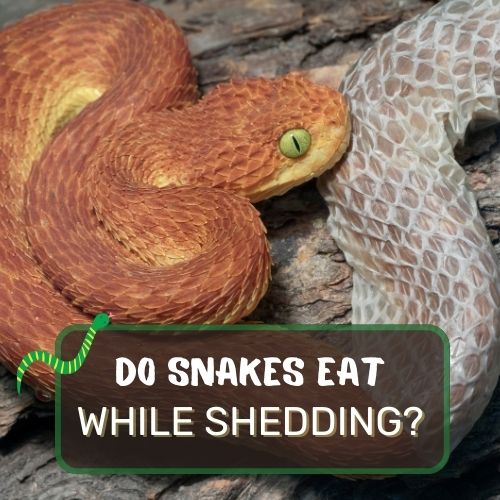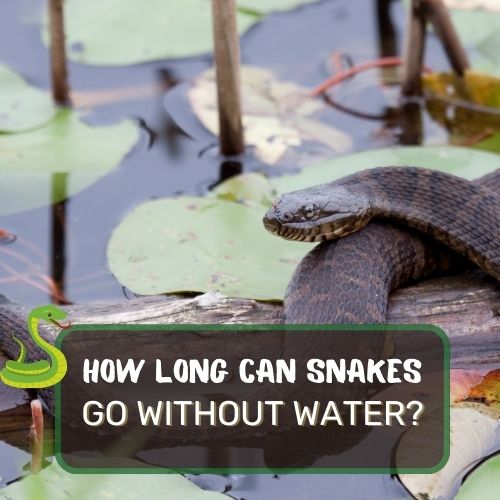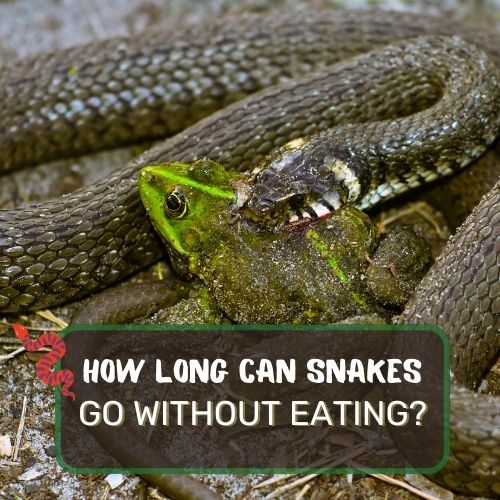
In this article, we delve into the intriguing world of snake-frog interactions, exploring whether snakes do indeed consume frogs as part of their diet.
We examine the factors that influence this predator-prey relationship, shedding light on the various snake species that exhibit this behavior.
By reading this piece, you will gain a comprehensive understanding of the ecological significance of snakes consuming frogs, the adaptations that facilitate such feeding habits, and the importance of this dynamic interaction within ecosystems.
Prepare to unravel the secrets behind this age-old question and marvel at the wonders of nature’s intricate balance.
Table of Contents
- 1 Do Snakes Eat Frogs? (Yes, They Do)
- 2 Snakes that Eat Frogs
- 3 Reasons Why Snakes Eat Frogs
- 4 Frog Species Eaten by Snakes
- 5 Snake Feeding Behavior and Frog Predation
- 6 Interactions between Snakes and Frogs in the Wild
- 7 Ecological Significance of Snake-Frog Relationships
- 8 Snakes and Frogs in Captivity
- 9 FAQ
Do Snakes Eat Frogs? (Yes, They Do)
Yes, many snake species consume frogs as part of their diet. Frogs are especially common prey for water-loving snakes. The common water snake (Nerodia spp.) is one such example that frequently preys on amphibians, including frogs. Garter snakes (Thamnophis spp.) are also known to eat frogs, among other small creatures. In tropical regions, the diet of many tree snakes consists of frogs and other small vertebrates. The hunting strategy varies: some snakes actively pursue and capture frogs, while others employ ambush tactics. The frog’s size and the snake’s ability to swallow it determine whether it becomes a meal. Overall, frogs are a significant food source for various snake species worldwide.
Snakes that Eat Frogs

Northern Water Snake
The Northern Water Snake, scientifically known as Nerodia sipedon, is a common non-venomous snake found near freshwater habitats.
While primarily dining on fish and small aquatic creatures, these snakes do not pass on the opportunity to savor a plump frog when available.
Their agile movements in and around water give them an advantage when ambushing unsuspecting amphibians.
Garter Snake
Garter snakes (Thamnophis spp.) are widespread across North America and are renowned for their vibrant patterns.
These adaptable snakes have a diverse diet, with some species relishing juicy frogs. Their quick strikes and mild venom are sufficient to subdue their amphibious feasts.
Western Hognose Snake
The Western Hognose Snake (Heterodon nasicus) is a peculiar and mildly venomous species known for its dramatic defensive behavior. Despite their preference for small mammals and eggs, they occasionally consume frogs.
The hognose snake’s quirky personality and frog-eating habits have captured the interest of many reptile enthusiasts.
Ring-necked Snake
Ring-necked snakes (Diadophis punctatus) are modest-sized serpents with striking coloration. Often found in wooded areas, they have a mixed diet that includes invertebrates, amphibians, and occasionally frogs.
Their slender bodies and unassuming nature make them intriguing subjects of study.
Central Asian Pit Viper
In the mountainous regions of Central Asia, certain pit vipers (Gloydius spp.) lurk, displaying their venomous prowess.
While these snakes generally prey on small rodents and insects, some opportunistic individuals won’t turn down a succulent frog if encountered during their foraging expeditions.
Amazon Tree Boa
Venturing into the tropical rainforests of South America, we encounter the Amazon Tree Boa (Corallus hortulanus).
These adept climbers primarily target birds and small mammals but have been known to snatch a frog or two from low-hanging branches. Their stealthy approach ensures a surprise attack on their unsuspecting prey.
Other Snake Species that Eat Frogs
Beyond the highlighted examples, numerous other snake species exhibit a taste for frogs. From various colubrids to venomous pit vipers, these slithering hunters prove the versatility of snakes’ diets across the globe.
Their diverse feeding habits contribute to the intricate web of life that sustains ecosystems.
In the next sections, we will further explore the fascinating nuances of snake and frog interactions, shedding light on the roles they play in their respective environments.
Reasons Why Snakes Eat Frogs

Natural Prey Preferences
The phenomenon of snakes preying on frogs can be attributed to natural prey preferences. Over thousands of years, snakes have evolved to exploit a wide range of food sources to survive and thrive.
With their efficient sensory systems, they can detect the presence of nearby frogs through vibrations and scent trails. As opportunistic hunters, snakes seize the chance to consume frogs when they encounter them in their habitats.
Nutritional Benefits of Frogs
Frogs offer valuable nutritional benefits to snakes. These amphibians are packed with essential nutrients such as proteins, vitamins, and minerals.
As ectothermic creatures, snakes rely on external heat sources to regulate their body temperature. Consuming frogs, which are warm-blooded, provides an additional energy source and helps maintain the snake’s metabolic needs.
Opportunistic Feeding Behavior
Snakes are adaptable predators, and their feeding behavior is often opportunistic. When preferred prey items like rodents or birds are scarce, snakes readily switch to alternative food sources, including frogs.
This flexibility enables them to survive in various environments and ecological conditions.
Adaptations for Catching and Consuming Frogs
Over time, snakes have developed specialized adaptations for catching and consuming frogs. Some snake species possess enlarged mouths, allowing them to swallow prey larger than their own head.
Additionally, venomous snakes have evolved potent toxins to immobilize and digest their prey effectively. These adaptations give snakes a competitive advantage when hunting and consuming frogs.
Frog Species Eaten by Snakes

North American Bullfrog
One of the most common frog species consumed by snakes is the North American Bullfrog (Lithobates catesbeianus).
This large, greenish-brown amphibian is abundant near freshwater bodies, making it an easily accessible food source for various snake species. Bullfrogs are powerful jumpers, but their size makes them enticing targets for agile snake predators.
Leopard Frog
Leopard frogs (Lithobates spp.) are another popular choice on the snake menu. With their distinctive spots and long legs, these frogs are swift and elusive.
However, some snake species possess the speed and stealth required to capture these agile amphibians.
European Green Toad
Venturing beyond North America, the European Green Toad (Bufo viridis) finds itself on the menu for certain European snake species.
These toads secrete toxins as a defense mechanism, but some snakes have developed immunity to these chemicals, allowing them to feast on these vibrant amphibians.
More Frog Species Commonly Consumed by Snakes
Apart from the mentioned examples, snakes feed on a myriad of frog species depending on their geographical location and habitat.
From tree frogs to poison dart frogs, these diverse amphibians become part of the snake’s dietary repertoire.
As we continue to explore the captivating interplay between snakes and frogs, we gain deeper insights into the delicate balance of nature and the fascinating strategies that contribute to the survival of these remarkable creatures.
Snake Feeding Behavior and Frog Predation
Hunting Strategies Employed by Snakes
Snakes exhibit a wide array of hunting strategies when it comes to capturing frogs. Some, like the Northern Water Snake, are adept at ambush hunting, patiently lying in wait near the water’s edge until a frog hops by.
Others, such as the lightning-fast strike of the Garter Snake, rely on speed and precision to catch their slippery prey. The Amazon Tree Boa uses its strong coils to ensnare frogs that venture too close to its hunting perch in the trees.
Venomous Snakes and Frog Predation
Venomous snakes play a unique role in frog predation. While non-venomous snakes may rely on constriction or overwhelming their prey with sheer numbers, venomous species like pit vipers deliver a potent venom through their fangs.
This venom immobilizes the frog, making it easier for the snake to swallow its prey whole. However, not all venomous snakes consume frogs regularly, as their diet often consists of rodents or other small animals.
Digestive Process of Snakes
After a snake successfully captures and consumes a frog, the digestive process begins. Snakes have a remarkable ability to stretch their jaws and swallow prey much larger than their own head.
Once inside, powerful stomach acids aid in breaking down the frog’s body. This process can take several hours to days, depending on the snake’s size and the size of the prey.
As ectotherms, snakes rely on external heat to aid digestion, basking in the sun or using other heat sources.
Frequency of Snake Predation on Frogs
The frequency of snake predation on frogs varies depending on factors such as snake species, habitat, and frog availability.
Snakes that predominantly inhabit aquatic or semi-aquatic environments, like the Northern Water Snake or the Western Hognose Snake, may encounter frogs more frequently and thus consume them more often.
In contrast, snakes dwelling in arid regions or dense forests may have fewer opportunities to prey on frogs and may rely on other food sources.
Interactions between Snakes and Frogs in the Wild

Impact of Snake Predation on Frog Populations
The relationship between snakes and frogs has a notable impact on frog populations.
While snake predation can lead to a decline in frog numbers in certain areas, it also helps control frog populations, preventing overpopulation that could disrupt the ecosystem’s balance.
The co-evolution of these species has resulted in adaptations and counter-adaptations that shape their ongoing interactions.
Defense Mechanisms of Frogs against Snakes
Frogs have evolved various defense mechanisms to evade snake predation. Some frogs possess bright warning colors, indicating their toxicity and deterring potential predators.
Others use camouflage to blend into their surroundings, making it difficult for snakes to detect them. Some species employ defensive postures or vocalizations to startle predators and discourage attacks.
Camouflage and Escape Tactics Used by Frogs
Camouflage is a crucial survival tactic for many frog species. Tree frogs, for instance, boast vibrant hues that help them blend into foliage while burrowing frogs sport earthy tones to match their underground homes.
Additionally, frogs rely on their powerful hind legs to make quick escapes, leaping into nearby water or dense vegetation to avoid becoming a snake’s meal.
Mutual Benefits or Detriments of Snake-Frog Interactions
The snake-frog interactions in the wild can lead to mutual benefits or detriments for both species.
On one hand, frogs serve as a vital food source for snakes, helping maintain their populations and contributing to the ecological balance.
On the other hand, excessive snake predation can have adverse effects on local frog populations, potentially disrupting food chains and ecosystem dynamics.
As we continue our journey into the captivating world of “do snakes eat frogs,” we uncover a complex web of interactions that shape the lives of these remarkable creatures.
Ecological Significance of Snake-Frog Relationships
Role of Frogs in the Snake’s Diet
Frogs play a crucial role in the diet of many snake species, especially those dwelling near water bodies or in moist environments.
As a readily available food source, frogs provide essential nutrients and energy to snakes, facilitating their growth, reproduction, and overall well-being.
In turn, snakes act as natural predators, controlling frog populations and preventing ecological imbalances that could arise from unchecked frog numbers.
Influence of Frogs on Snake Behavior and Distribution
The presence of frogs significantly influences snake behavior and distribution. Snakes tend to concentrate their activities around areas abundant with frogs, leading to localized populations where suitable habitats are available.
Moreover, the availability of frogs impacts snake movement patterns and migration, as these reptiles seek out areas with a steady supply of their preferred prey.
Importance of Maintaining Balanced Predator-Prey Dynamics
The intricate dance between snakes and frogs underscores the significance of maintaining balanced predator-prey dynamics in ecosystems.
When frog populations thrive, snakes find ample sustenance, ensuring the stability of their own populations. Conversely, if frog populations decline due to various factors, it can have cascading effects on the entire ecosystem, affecting other organisms that depend on frogs as prey or predators.
Snakes and Frogs in Captivity

Keeping Frogs as Snake Feeders
In captivity, some snake owners choose to provide live frogs as part of their pets’ diets. Feeding live prey can mimic a snake’s natural hunting behavior and stimulate their senses, leading to more active and healthier animals.
Additionally, offering a varied diet, including frogs, can contribute to the overall nutritional well-being of captive snakes.
Challenges and Considerations for Snake Owners
Feeding live frogs to captive snakes poses certain challenges and considerations for responsible snake owners. Ensuring that the frogs are of appropriate size to avoid harming the snake during feeding is crucial.
Moreover, monitoring the feeding process closely is essential to prevent injuries to both the snake and the frog. Some snake species may also be reluctant to consume live prey, necessitating alternative feeding methods.
Ethical Concerns Regarding Feeding Live Frogs to Snakes
The practice of live feeding has sparked ethical debates within the herpetological community. Critics argue that it can cause unnecessary stress and harm to both the prey and the predator.
Advocates of ethical husbandry stress the importance of providing pre-killed or frozen-thawed prey, eliminating any risk of injury to the snake and minimizing the suffering of the prey.
Alternatives to Live Frog Feeding
Thankfully, there are alternatives to live frog feeding that satisfy the nutritional needs of captive snakes without causing harm to live prey.
Pre-killed or frozen-thawed prey, such as rodents or amphibians, are widely available and serve as excellent substitutes. These methods offer the benefits of live feeding without the ethical concerns and risks associated with feeding live prey.
FAQ
How Long Does It Take a Snake to Eat a Frog?
The time it takes for a snake to eat a frog varies depending on the snake’s size, the frog’s size, and the snake’s feeding behavior. Smaller snakes may consume a frog within a few minutes, while larger snakes may take several hours to fully digest their prey. After swallowing the frog, snakes begin the digestion process, which can last from a few hours to a few days, allowing the snake’s powerful stomach acids to break down the frog’s body.
Are Frogs Afraid of Snakes?
Frogs, like many prey animals, have developed natural instincts to be wary of potential predators, including snakes. Some species of frogs have evolved mechanisms to detect snake predators through their keen senses. When frogs sense the presence of snakes, they may respond by freezing, using camouflage, or employing escape tactics such as jumping into nearby water or vegetation.
Are Snakes Attracted to Frogs?
Snakes are opportunistic hunters, and if frogs are available in their habitats, they will likely include them in their diet. While not all snake species actively seek out frogs as prey, those living near aquatic or semi-aquatic environments or in areas with abundant frog populations may be more likely to consume them.
Conclusion
In this comprehensive exploration of “do snakes eat frogs,” we have delved into the intriguing dynamics between these two fascinating creatures.
Snakes, as diverse and adaptable predators, exhibit a range of strategies to hunt and consume frogs, which provide valuable nutrients and contribute to the delicate balance of ecosystems.
In captivity, responsible snake owners have alternatives to live frog feeding, ensuring the well-being of both snakes and their prey.
Ethical considerations have sparked discussions within the herpetological community, prompting us to explore ways to provide a nutritious diet while minimizing potential harm to live prey.
As we unravel the ecological significance of snake-frog relationships, we gain insights into the intricate web of life and the importance of maintaining balanced predator-prey dynamics.
Further research into these interactions can lead to a deeper understanding of our natural world and how to protect its biodiversity.
In conclusion, the captivating story of “do snakes eat frogs” continues to unravel, reminding us of the awe-inspiring wonders that lie within the natural realm.




0 Comments